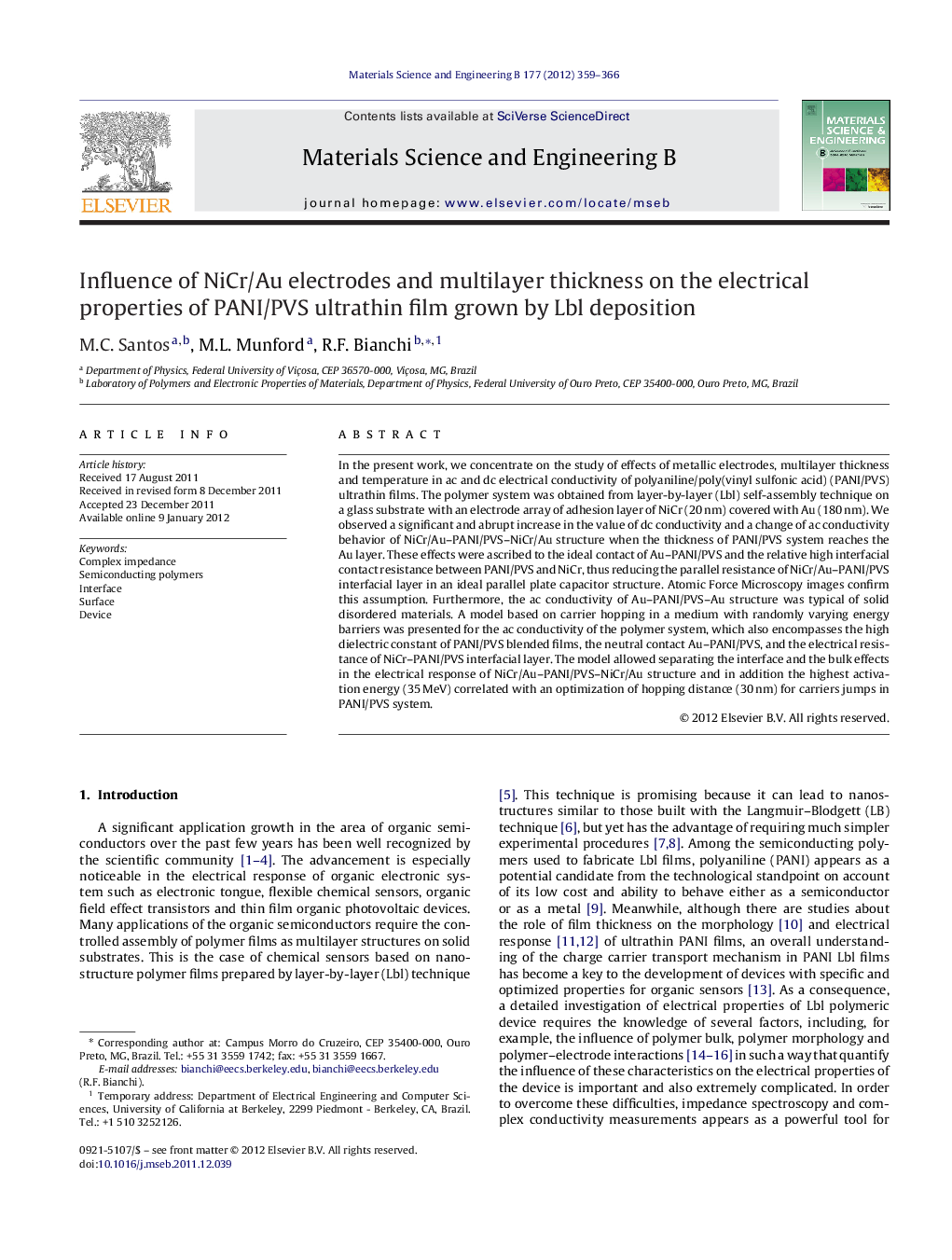| کد مقاله | کد نشریه | سال انتشار | مقاله انگلیسی | نسخه تمام متن |
|---|---|---|---|---|
| 1529566 | 995760 | 2012 | 8 صفحه PDF | دانلود رایگان |

In the present work, we concentrate on the study of effects of metallic electrodes, multilayer thickness and temperature in ac and dc electrical conductivity of polyaniline/poly(vinyl sulfonic acid) (PANI/PVS) ultrathin films. The polymer system was obtained from layer-by-layer (Lbl) self-assembly technique on a glass substrate with an electrode array of adhesion layer of NiCr (20 nm) covered with Au (180 nm). We observed a significant and abrupt increase in the value of dc conductivity and a change of ac conductivity behavior of NiCr/Au–PANI/PVS–NiCr/Au structure when the thickness of PANI/PVS system reaches the Au layer. These effects were ascribed to the ideal contact of Au–PANI/PVS and the relative high interfacial contact resistance between PANI/PVS and NiCr, thus reducing the parallel resistance of NiCr/Au–PANI/PVS interfacial layer in an ideal parallel plate capacitor structure. Atomic Force Microscopy images confirm this assumption. Furthermore, the ac conductivity of Au–PANI/PVS–Au structure was typical of solid disordered materials. A model based on carrier hopping in a medium with randomly varying energy barriers was presented for the ac conductivity of the polymer system, which also encompasses the high dielectric constant of PANI/PVS blended films, the neutral contact Au–PANI/PVS, and the electrical resistance of NiCr–PANI/PVS interfacial layer. The model allowed separating the interface and the bulk effects in the electrical response of NiCr/Au–PANI/PVS–NiCr/Au structure and in addition the highest activation energy (35 MeV) correlated with an optimization of hopping distance (30 nm) for carriers jumps in PANI/PVS system.
► Electrical transport properties of nanostructured PANI–PVS multilayers (Lbl PANI–PVS).
► Effect of interfacial layer properties on the performance of Lbl PANI–PVS films.
► Ac conductivity of Lbl PANI–PVS presents an almost universal behavior.
► A hopping model is found to be more appropriate for explaining the ac conductivity.
► Hopping distance (30 nm) and hopping energy (35 MeV) were obtained for Lbl PANI–PVS films.
Journal: Materials Science and Engineering: B - Volume 177, Issue 4, 15 March 2012, Pages 359–366